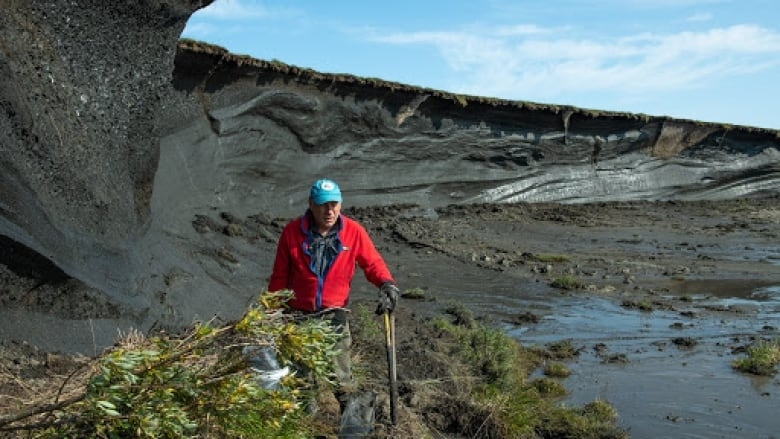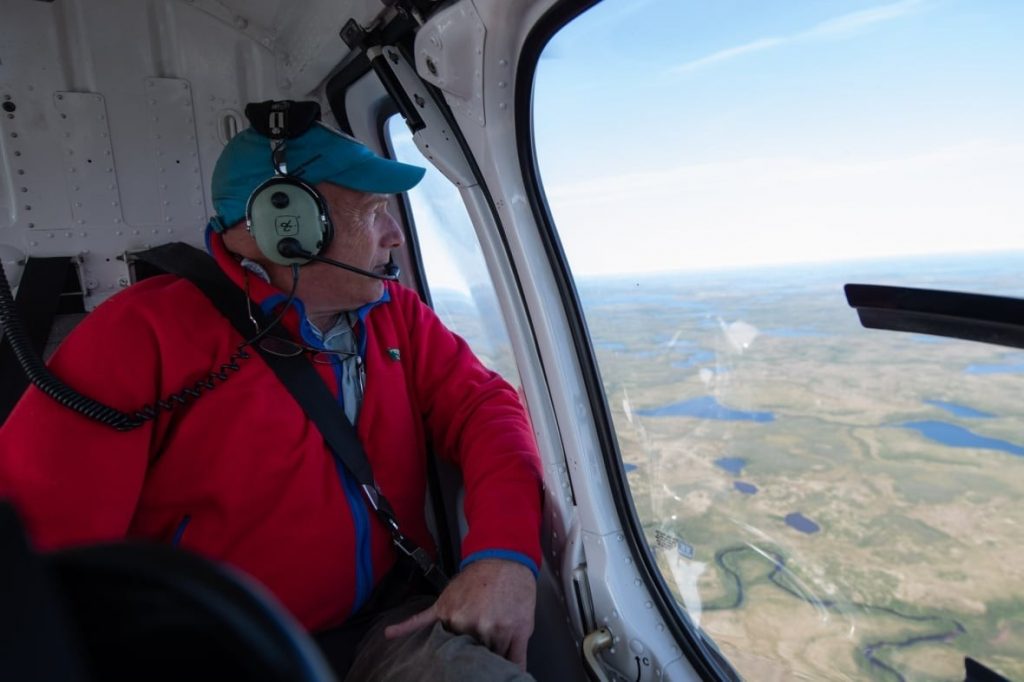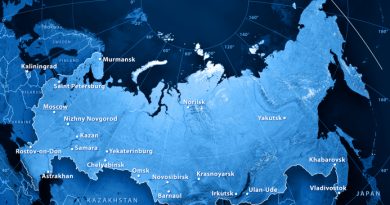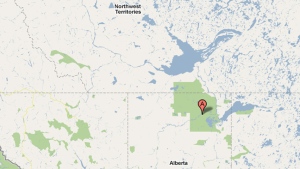UN environmental assessment shows need for more offshore permafrost research

The damage that comes with on-land permafrost thaw in the Arctic is well documented. What’s less well understood is how changes to underwater permafrost affects coastal erosion.
A new Coastal and Offshore Permafrost Rapid Response Assessment conducted by the United Nations Environmental Program (UNEP) aims to correct that.
It was led by UNEP and GRID Arendal, a non-profit environmental communications centre based in Norway. Natural Resources Canada and the Korean Polar Institute also contributed with funding and research for the project, along with over 60 people and organizations from all over the world, including the Inuvialuit Regional Corporation and the Aurora Research Institute in Inuvik.
“The connections between the onshore of the coast and the offshore permafrost is complicated to study … it really calls for an international approach,” said Scott Dallimore, a research scientist with the Geological Survey of Canada.
“Our hope is that this assessment maybe provides a bit of a perspective where … agencies involved can get together to settle on some common themes and provide the resources.”
Help highlight gaps
The project focuses on the western Canadian Arctic, Siberia and northern Alaska.

The Arctic is warming up about two to three times faster than anywhere else on earth, which is impacting communities like Tuktoykatuk.
But Dallimore said there is quite a bit of research that needs to be done in regards to offshore permafrost, and the assessment helped highlight gaps in knowledge.
“The studies themselves are designed around basically answering straightforward Canadian questions,” Dallimore explained.
That includes questions around the stability of offshore permafrost, Dallimore said along with learning more about under sea pingos and how landslides happen and whether they are a threat to producing a tsunami, for example.
“We actually know almost nothing about that environment,” Dallimore said.
“We have very few surveys of that area because of course it’s hard to get vessels up there to do research and very few documentations of actual processes … and even habitat assessments are very limited in the nearshore.”
Dallimore said that although the nearshore environment and wildlife in the study areas are very important to residents of the regions, such as the Inuvialuit in the Western Arctic, “the geoscience studies in that environment are extremely limited.”
Underwater permafrost
Tiina Kurvits, senior specialist in ecosystem management for GRID Arendal, said the organization has completed about 25 different assessments on environmental issues around the world.
Kurvitz, who has lived in Inuvik previously, said it was striking for her to see what is happening along the Arctic coast and some of the footage from the waves pounding on the coast of Tuktoyaktuk.
“You also realize how much coastal infrastructure we really have … You see these massive concrete pilings that were at one time sunk down in the soil and there’s nothing around them now … that kind of stuff was very dramatic and very eye opening.”
She said it might be surprising for people at first to think that there is permafrost underwater offshore, and that it’s an area that they believe needs further research.
“All the different aspects of how it impacts the people up there. Not just the terrestrial part of the permafrost, but in the offshore, how it impacts people’s lives and livelihoods.”
“Anything offshore, in the Arctic in particular, it’s really expensive [to research] … so you can’t do these things on the cheap.”

Long rollout compared to other assessments
The assessment took a couple of years to produce and was published in a report at the end of October.
But Kurvitz said this one took longer than the usual three to six months.
“Normally it’s called rapid for a reason … this one I started calling the not-so-rapid response assessment,” said Kurvits.
“One of the things that was different with this one is that we actually engaged quite a lot with the community … that was one of the reasons why we hit pause with this one.”
Kurvits said they didn’t do new research for this assessment, but instead brought past research together to paint a picture of what’s happening in the North.
She noted how the community impacts are a huge part of the story when it comes to what is happening with the thawing of the permafrost.
Interactive format
Although the rapid assessments in the past are normally presented in a booklet style presentation, this one is interactive and presented online.
“We actually tried to design it to be very visual. We have more than 20 videos of scientists talking about particular themes where, you know, people will see a landslide if they’re interested to understand the landslide. They can launch a video and hear scientists talking about describing it,” said Dallimore.
A big part of the assessment was getting knowledge and stories from local leaders and community members in the Arctic to understand the impacts of thawing permafrost in their everyday life.
He said it is vital for researchers to address questions with a northern voice, northern participation and in an integrated way.
Some of the information shared in the assessment is well-known to people who live in the region: coastlines are eroding rapidly because of ground subsidence and landslides, and the alteration of ground and surface water dynamics are affecting infrastructure and the people living along the Arctic coast.
Dallimore said what’s unique about this assessment is that it is presented in a way to engage with audiences, and collect information and opinions from community members on how thawing permafrost affects their lives.
“We looked at the history of permafrost studies on land, the coastal aspect of how permafrost controlled coastal erosion and the offshore permafrost,” said Dallimore.
“It’s really a summary of all of the historical work that’s going on and a particular topic.”
Although the assessment is completed, it still has room for northern collaborators, including a crowdsourced online story map for northerns to submit photos and other observations from their regions.
Related stories from around the North:
Canada: What the Arctic’s transition to a ‘new climate’ looks like, CBC News
Greenland: A big chunk of Greenland’s ice cap breaks off as Arctic shifts to new climate regime, The Associated Press
Finland: Miners hunting for metals to battery cars threaten Finland’s Sámi reindeer herders’ homeland, Yle News
Iceland: Arctic Science Ministerial postponed to 2021 due to COVID-19, Eye on the Arctic
Norway: Climate change hits back at Svalbard, coal mine flooded by melting glacier in Norway, The Independent Barents Observer
Russia: Record-warm Arctic summer fatal to wild reindeer in Russia, say environmentalists, The Independent Barents Observer
Sweden: Extra billions to SAS – but with stricter climate requirements, Radio Sweden
United States: Bering Sea ice at lowest extent in at least 5,500 years, study says, Alaska Public Media


